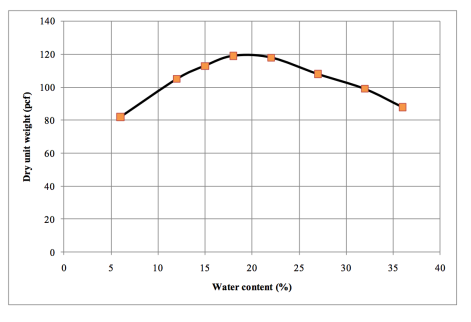The Standard Proctor test is a compaction test done by determining the optimum moisture content of a given soil type that will make the soil most dense under compaction and achieve its ‘maximum dry density’. Maximum dry density is the peak efficiency level at which a material type is compressed eliminating most of it’s voids while being free of moisture.
Recently the Standard Proctor test has developed into a more advance ‘Modified proctor Test’ which takes into consideration more advanced field methods of compaction (larger equipment, vibrator rollers. Etc) This test typically consists of compacting soil at known moisture content into a cylindrical mold using controlled compacting method. The process is repeated for different moisture contents and dry densities are determined for each. Dry density to moisture content relationship is graphed to show resulting compaction curve. Maximum Dry Density is obtained from peak point of curve, known as optimal moisture content.
Proctor compaction test is designated by ASTM D698 and AASHTO T99. Modified Proctor Compaction test is designated by ASTM D1557 and AASHTO T180.
